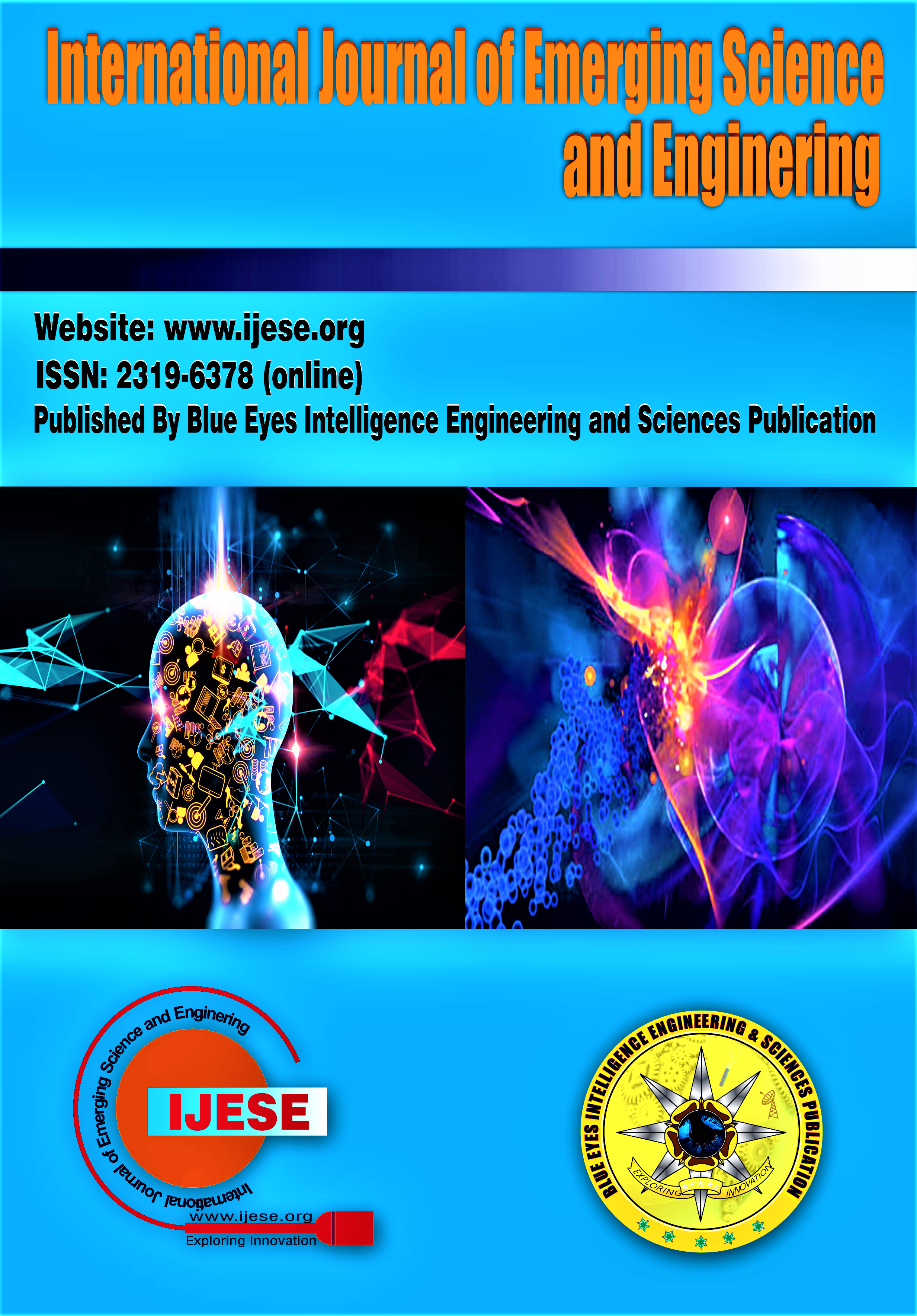Water and COVID-19 Pandemic: A Literature Review
Main Article Content
Abstract
This literature review analytically discovers how the complex dynamic between Water and the extraordinary challenges caused by the COVID-19 epidemic is associated the critical synthesis and Evaluation of the selected papers reveals a diverse set of techniques and results, contributing to the research knowledge of the complex interplay between the pandemic and water parameters. Ranging from different studies on the topic, the review comes up with a critical analysis of 15 water demand articles that deal in varied areas, covering water resilience in the United Kingdom and Ireland, water resource disruptions in India, and so on. What is more is that the analysis of varying results and methods leads to the highlight of common patterns and differences, which lays out the general direction of research on such a significant subject. By looking for common issues in different editions, the subject matter of the uncertainty involved becomes precise and complicated. The results highlight that the pandemic has affected multiple facets of Water globally. Each study offers a distinct perspective, from modeling in Saudi Arabia to researching water quality in Hawai'i during lockdowns. While "Water Sector Resilience in the United Kingdom and Ireland: The COVID-19 Challenge" focuses on adaptation strategies, "Changes in Water Use and wastewater generation influenced by the COVID-19 pandemic: A Case Study of China" looks at Regional Variations. The concluding section describes outcomes and suggestions for the broader perception of water associations with the pandemic.
Downloads
Article Details
Section

This work is licensed under a Creative Commons Attribution-NonCommercial-NoDerivatives 4.0 International License.
How to Cite
References
Cominato, C., Sborz, J., Kalbusch, A., & Henning, E. Before and during the COVID-19 pandemic, water demand profile in a Brazilian social housing complex. Heliyon, 8(8) (2022). https://doi.org/10.1016/j.heliyon.2022.e10307
Garcia, C., Deyà-Tortella, B., Lorenzo-Lacruz, J., Morán-Tejeda, E., Rodríguez-Lozano, P., & Tirado, D . . Zero tourism due to COVID-19: an opportunity to assess water consumption associated with tourism. Journal of Sustainable Tourism, 31(8), (2023)1869-1884. https://doi.org/10.1080/09669582.2022.2079652
Walker, N. L., Styles, D., & Williams, A. P.. Water sector resilience in the United Kingdom and Ireland: The COVID-19 challenge. Utilities Policy, 82 (2023). https://doi.org/10.1016/j.jup.2023.101550
Balamurugan, M., Kasiviswanathan, K. S., Ilampooranan, I., & Soundharajan, B. S. COVID-19 Lockdown disruptions on water resources, wastewater, and agriculture in India. Frontiers in Water, (2021)3- 24. https://doi.org/10.3389/frwa.2021.603531
Raza, T., Shehzad, M., Qadir, M. F., Kareem, H. A., Eash, N. S., Sillanpaa, M., & Hakeem, K. R. . Indirect effects of Covid-19 on water quality. Water-Energy Nexus, 5, (2022)29-38. https://doi.org/10.1016/j.wen.2022.10.001
Uddin, M. G., Diganta, M. T. M., Sajib, A. M., Rahman, A., Nash, S., Dabrowski, T., ... & Olbert, A. I. . Assessing the impact of COVID-19 lockdown on surface water quality in Ireland using the advanced Irish water quality index (IEWQI) model. Environmental Pollution, 336, (2023)12-225. https://doi.org/10.1016/j.envpol.2023.122456
Prasood, S. P., Mukesh, M. V., Sajinkumar, K. S., & Thrivikramji, K. P.. COVID-19 pandemic lockdown modulation of physicochemical parameters of surface water, Karamana river basin, Southwest India: A weighted arithmetic index and geostatistical perspective. Total Environment Research Themes, (2023)6-15. https://doi.org/10.1016/j.totert.2023.100042
Changklom, J., Surasaranwong, T., Jowwongsan, P., Lipiwattanakarn, S., & Pornprommin, A.. Impact of COVID-19 on monthly water consumption on a tropical tourism island: a case study of Phuket (Thailand). Water Supply, 22(3), (2022)3419-3430. https://doi.org/10.2166/ws.2021.396
Zurek, M., Ingram, J., Sanderson Bellamy, A., Goold, C., Lyon, C., Alexander, P., ... & Withers, P. J. . Food system resilience: concepts, issues, and challenges. Annual Review of Environment and Resources, 47, (2022)511-534. https://doi.org/10.1146/annurev-environ-112320-050744
Kazak, J. K., Szewranski, S., Pilawka, T., Tokarczyk-Dorociak, K., Janiak, K., & Swiader, M. . Changes in water demand patterns in a European city due to restrictions caused by the COVID-19 pandemic. Desalination and water treatment, 222(2021) 1-15. https://doi.org/10.5004/dwt.2021.27242
DeMaagd, N., Fuleky, P., Burnett, K., & Wada, C. Tourism water use during the COVID-19 shutdown. Annals of Tourism Research, 97, (2022)103475–103475. https://doi.org/10.1016/j.annals.2022.103475
Jia, X., Shahzad, K., Jiří Jaromír Klemeš, & Jia, X. Changes in water use and wastewater generation influenced by the COVID-19 pandemic: A case study of China. Journal of Environmental Management, 314, (2022)115024–115024. https://doi.org/10.1016/j.jenvman.2022.115024
Yu, F., Wang, Y., Liu, X., Yu, J., Zhao, D., Deng, H., Guo, B., Shi, R., Wu, B., & Chen, H. . Driving forces and variation in water footprint before and after the COVID-19 lockdown in Fujian Province of China. Journal of Cleaner Production, 402, (2023)136696–136696. https://doi.org/10.1016/j.jclepro.2023.136696
Antwi, S. H., Getty, D., Linnane, S., & Rolston, A. COVID-19 water sector responses in Europe: A scoping review of preliminary governmental interventions—the science of the Total Environment, 762, (2021)143068. https://doi.org/10.1016/j.scitotenv.2020.143068
Abdullah, A.; Ahmed, M; Zico, M., Yashpal, S..The Mathematical Modeling Approach for the Wastewater Treatment Process in Saudi Arabia during COVID-19 Pandemic. Discrete Dynamics in Nature and Society, (2022) 1-15. https://doi.org/10.1155/2022/1061179
Joshi, D. A. (2021). COVID 19 Infodemic: Analysis of the Spread and Reach of Misinformation. In International Journal of Recent Technology and Engineering (IJRTE) (Vol. 9, Issue 5, pp. 195–201). https://doi.org/10.35940/ijrte.e5260.019521
Gagan, M., D.P., U., S. K., C., Sunil, Dr. K., Gaurav, P., Avinash, K., Anjali, N., & Pawan, K. (2022). Impact of Pandemic COVID19 on Air and Water Quality in India: A Systematic Review. In International Journal of Engineering and Advanced Technology (Vol. 11, Issue 5, pp. 149–167). https://doi.org/10.35940/ijeat.e3590.0611522
Kusum*, & Panda, Dr. S. (2020). Detecting Twitter’s Impact on COVID-19 Pandemic in India. In International Journal of Innovative Technology and Exploring Engineering (Vol. 9, Issue 8, pp. 815–819). https://doi.org/10.35940/ijitee.h6718.069820
Sarfraz*, M., Rawal, P., & Sharma, C. (2021). Importance of Physical Fitness during Covid-19 Era. In International Journal of Soft Computing and Engineering (Vol. 10, Issue 5, pp. 14–19). https://doi.org/10.35940/ijsce.f3493.0510521
Ilyass, M., Hamza, N., Anass, E., Abderrahmane, E., Mustapha, B., abdelouahed, B., & Khalil, A. (2022). Surgeon–Anesthesiologist Relationship for Patient Safety: Prospective study. In International Journal of Advanced Medical Sciences and Technology (Vol. 3, Issue 1, pp. 1–4). https://doi.org/10.54105/ijamst.a3032.123122





